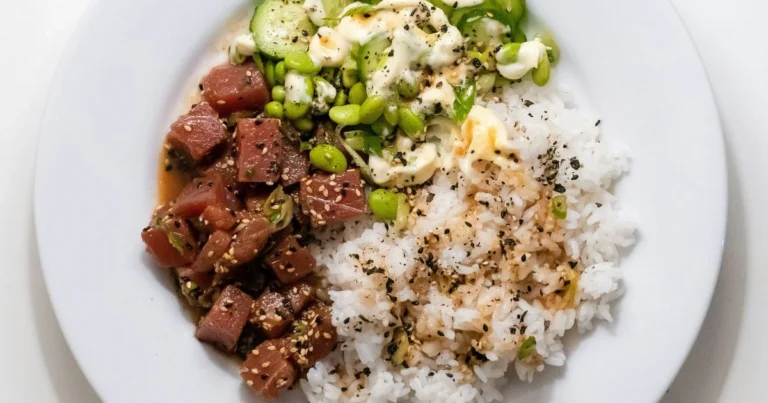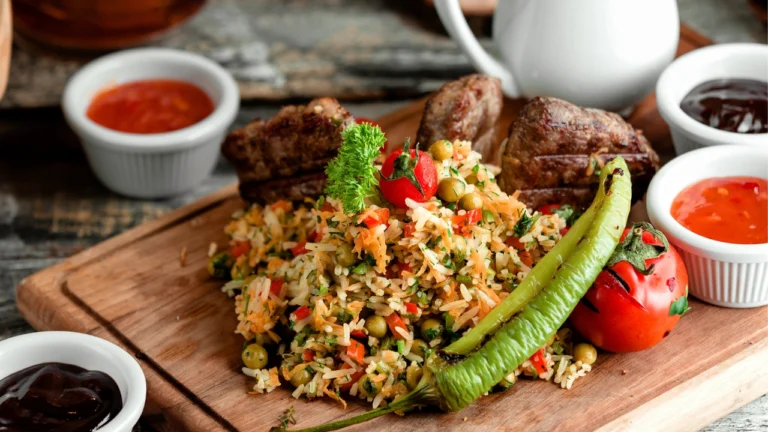How to Cook Beef Shank with Bone for Tender Results
Cooking beef shank with bone can be a rewarding culinary experience, yielding tender and flavorful results. This cut of meat, often overlooked, is rich in connective tissue that, when cooked properly, breaks down to create a rich, velvety texture.

Achieving tender results requires careful attention to cooking methods. The right techniques can make all the difference, transforming a tough cut into a mouth-watering dish. In this article, we will explore the best practices for cooking beef shank to achieve tender and delicious outcomes.
Table of Contents
Key Takeaways
- Understanding the importance of cooking methods for tender results
- Exploring various techniques for cooking beef shank with bone
- Learning how to achieve tender and flavorful outcomes
- Discovering the benefits of slow cooking for tougher cuts
- Mastering the art of cooking beef shank for a delicious meal
Understanding Beef Shank with Bone
Beef shank with bone is a culinary delight that, when prepared correctly, offers a depth of flavor and tenderness. This cut of meat is often overlooked, but it provides a rich culinary experience when cooked appropriately.
What is Beef Shank?
Beef shank is a tougher cut taken from the leg area of the cow. It’s known for its rich flavor and tender texture when cooked low and slow. The presence of the bone adds to the flavor, making it a popular choice for hearty stews and braises.
Nutritional Profile
Beef shank is not only flavorful but also packed with nutrients. It’s an excellent source of protein, vitamins, and minerals such as iron and zinc. Cooking it with the bone in enhances the nutritional profile by adding collagen, which is beneficial for joint health and digestion.

Why Cook with the Bone In
Cooking beef shank with the bone in is a technique that significantly enhances both the flavor and the nutritional value of the dish. The bone acts as an insulator, helping the meat cook more evenly, and it adds a richness to the sauce or broth it’s cooked in. The resulting dish is not only more flavorful but also more nutritious.
Key benefits of cooking beef shank with bone include:
- Enhanced flavor due to the marrow and collagen released during cooking
- Increased nutritional value from the minerals and collagen
- Tender texture achieved through slow cooking
Essential Equipment for Cooking Beef Shank
The key to successfully cooking beef shank lies in the equipment you use. To achieve tender and flavorful results, you’ll need a few essential items.
Cooking Vessels
A large, heavy pot or Dutch oven is ideal for braising beef shank. These vessels distribute heat evenly and can withstand high temperatures. Look for ones made from cast iron or heavy ceramic materials.

Thermometers and Tools
A meat thermometer is crucial for ensuring the beef shank is cooked to a safe internal temperature. Additionally, a sharp knife and cutting board are necessary for preparing the meat.
Optional Equipment
While not necessary, a slow cooker or Instant Pot can simplify the cooking process. These appliances allow for hands-off cooking and can result in tender beef shank with minimal effort.
Preparing Beef Shank with Bone for Cooking
Preparing beef shank with bone for cooking involves a few critical techniques that enhance its tenderness and flavor. Proper preparation is essential to achieve the best results.
Cleaning and Trimming
Start by cleaning the beef shank under cold running water, then pat it dry with paper towels. Trim any excess fat or connective tissue if necessary, to ensure even cooking.
Seasoning Techniques
Seasoning is a crucial step that adds depth to the dish. Use a mix of salt, pepper, and your choice of herbs and spices. Rub the seasoning mixture all over the beef shank, making sure it’s evenly coated. For enhanced flavor, consider letting it sit for a while before cooking.
Marinating Options
Marinating can further tenderize the beef shank. Use a marinade that includes acidic ingredients like vinegar or wine, mixed with olive oil and your preferred herbs. Marinate for at least a few hours or overnight for the best results.
Braising: The Perfect Method for Tender Results
The art of braising involves cooking the beef shank in liquid over low heat for an extended period. This technique is particularly effective for tougher cuts like beef shank, as it breaks down the connective tissues, resulting in tender and flavorful meat.
Step-by-Step Braising Process
To braise beef shank, start by searing the meat in a hot pan to create a crust on the outside. Then, transfer the shank to a large Dutch oven or oven-safe pot, adding enough liquid to cover the meat. Cover the pot and transfer it to a preheated oven.
Liquid Combinations for Flavor
The choice of liquid is crucial for the flavor of the braised beef shank. Common combinations include stock and wine, or stock and tomatoes. You can also add aromatics like onions, carrots, and celery for added depth.
Ideal Cooking Times and Temperatures
Cooking time and temperature are critical for achieving tender results. Typically, braising involves cooking at 300°F (150°C) for 2.5 to 3 hours. The internal temperature of the meat should reach 190°F (88°C) for optimal tenderness.
| Cooking Method | Temperature (°F) | Cooking Time (hours) |
|---|---|---|
| Braising | 300 | 2.5-3 |
| Slow Cooker | Low | 8-10 |
| Pressure Cooker | High | 1-1.5 |
Alternative Cooking Methods
While braising is a popular method for cooking beef shank, there are other effective techniques to achieve tender results. Exploring these alternatives can help you find the best method based on your equipment and preferences.
Slow Cooker Technique
Using a slow cooker is a convenient method that requires minimal supervision. Simply season the beef shank, place it in the slow cooker with your choice of vegetables and broth, and cook on low for 8-10 hours. This method ensures tender meat that falls off the bone.
Pressure Cooker Technique
A pressure cooker significantly reduces cooking time. By cooking the beef shank under pressure, you can achieve tender results in under an hour. This method is ideal for those short on time but still wanting tender beef shank.
Oven Roasting Method
Oven roasting is another viable option, offering a rich, caramelized crust on the beef shank. By roasting at a low temperature (around 300°F) for 2-3 hours, you can achieve tender meat. Covering the dish can help retain moisture.
Comparing Results for Tenderness
| Cooking Method | Cooking Time | Tenderness Level |
|---|---|---|
| Slow Cooker | 8-10 hours | Very Tender |
| Pressure Cooker | Under 1 hour | Tender |
| Oven Roasting | 2-3 hours | Very Tender |
Each method has its advantages, and the choice depends on your time, equipment, and personal preference. As one culinary expert notes,
“The key to tender beef shank is low and slow cooking, regardless of the method.”
By understanding the different techniques, you can achieve perfectly cooked beef shank every time.
How to Know When Your Beef Shank is Perfectly Tender
To enjoy a tender beef shank, it’s crucial to recognize the signs of doneness. Several indicators can help you determine if your beef shank is cooked to perfection.
Visual Indicators
A tender beef shank will typically have meat that falls off the bone easily. Visual inspection can reveal if the connective tissues have broken down, indicating tenderness.
Texture Tests
Testing the texture by inserting a fork or knife can help assess tenderness. If it slides in easily, the beef shank is likely done.
Temperature Guidelines
Using a meat thermometer is a precise way to check for doneness. Beef shank is typically tender at an internal temperature of 195°F to 205°F.
| Method | Indicator of Tenderness |
|---|---|
| Visual Inspection | Meat falls off the bone |
| Texture Test | Fork or knife slides in easily |
| Temperature Check | Internal temperature 195°F – 205°F |
Serving Suggestions and Complementary Dishes
The rich flavors of beef shank deserve to be complemented by equally delicious sides and sauces. When planning your meal, consider the overall dining experience you wish to create.
Classic Pairings
Beef shank pairs well with a variety of classic dishes. Some popular options include:
- Mashed potatoes
- Roasted vegetables
- Garlic bread
- Polenta
Sauce and Gravy Ideas
Enhance your beef shank with a rich sauce or gravy. Some ideas include:
- Red wine reduction: A classic choice that complements the beef’s rich flavor.
- Mushroom gravy: Adds an earthy flavor.
- Horseradish sauce: Provides a spicy kick.
Utilizing the Bone Marrow
The bone marrow from your beef shank is a delicacy. You can serve it as is, or use it to enrich your sauces and gravies. Here’s a simple table to guide you:
| Use | Description | Benefit |
|---|---|---|
| As is | Serve the bone marrow directly | Rich, unadulterated flavor |
| In sauces | Use the marrow to enrich your sauce | Adds depth and richness |
| In gravies | Enhance your gravy with the marrow | Intensifies the flavor |
By incorporating these serving suggestions and complementary dishes, you can elevate your beef shank meal into a truly memorable dining experience.
Cooking Beef Shank to Perfection: A Summary
Cooking beef shank with bone can be a rewarding experience, yielding tender and flavorful results. The techniques discussed in this article provide a comprehensive guide to achieving tender beef shank.
By understanding the characteristics of beef shank, preparing it properly, and using the right cooking methods, anyone can achieve tender results. Braising, slow cooking, and pressure cooking are effective methods for cooking beef shank.
The key to tender beef shank lies in cooking it low and slow, allowing the connective tissues to break down. With the right techniques and a bit of patience, cooking beef shank with bone can become a staple in any kitchen.
FAQ
What is the best way to cook beef shank with bone?
Braising is considered the best method for cooking beef shank with bone, as it involves cooking the meat in liquid over low heat for an extended period, resulting in tender and flavorful results.
How long does it take to cook beef shank with bone?
The cooking time for beef shank with bone can vary depending on the method used, but it typically takes around 2-3 hours to achieve tender results when braising.
Can I cook beef shank with bone in a slow cooker?
Yes, beef shank with bone can be cooked in a slow cooker. Simply season the meat, place it in the slow cooker with your choice of liquid, and cook on low for 8-10 hours.
What are some common seasonings used for beef shank?
Common seasonings for beef shank include salt, pepper, garlic, thyme, and rosemary. You can also marinate the meat in a mixture of soy sauce, Worcestershire sauce, and herbs for added flavor.
How do I know when beef shank is cooked to perfection?
Beef shank is cooked to perfection when it is tender and falls off the bone. You can check for doneness by inserting a fork or knife into the meat; if it slides in easily, it’s done.
Can I use beef shank with bone for other dishes?
Yes, beef shank with bone can be used to make a variety of dishes, such as soups, stews, and braised beef recipes. The bone can also be used to make a rich and flavorful stock.
What are some good side dishes to serve with beef shank?
Classic pairings for beef shank include mashed potatoes, roasted vegetables, and polenta. You can also serve it with a side of sautéed greens or a simple salad.
How do I utilize the bone marrow from beef shank?
The bone marrow from beef shank can be scooped out and served as a delicacy, often accompanied by toast or crackers. It can also be used to add richness and flavor to soups and sauces.



